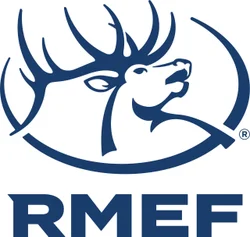RMEF - Rocky Mountain Elk Foundation
“Can you imagine life without elk and elk hunting?” This the the question asked by the founders of one of North America's most successful conservation groups. With the answer a resounding No!, four hunters from Troy, Montana pooled their talents and resources and created the Rocky Mountain Elk Foundation in May of that year. Today, over 150,000 members help to preserve over 492,000 acres of area open to public access for hunting and other outdoor activities.
Browning is a proud partner with the Rocky Mountain Elk Foundation and supports their bold conservation mission.
To learn more read below or visit www.rmef.org.
The history of the Rocky Mountain Elk Foundation.
In 1984, four hunters from Northwest Montana recognized a handful of organizations doing great work for species like ducks, turkeys and upland birds. They also recognized there was no group dedicated to North America’s grandest big game animal, elk. In May of that year, they pooled their time, talent and resources and created the Rocky Mountain Elk Foundation (RMEF), an organization dedicated to elk, elk hunting and the habitat they need to thrive.
Hard Work Pays Off. They set up shop in the back room of a trailer house in Troy, Montana where the four—a pastor, a realtor, a logger and a drive-in owner—created an organization that would directly benefit elk and other wildlife by putting money to work on the ground. The team drained their bank accounts and borrowed funds to mail out 43,000 brochures soliciting members, promising a subscription to a magazine about elk and elk hunting, as well as an annual international convention. They received a dismal 233 responses. But they believed they'd made a commitment to these people. So they borrowed additional funds and printed 32,000 copies of the premier issue of Bugle magazine, which they mailed out and distributed to grocery stores and gas stations throughout the West. It took time, hard work and patience, but by the end of 1984, membership had grown to almost 2,500.
The First of Many Successes to Come. In April 1985, the Rocky Mountain Elk Foundation held their first convention in Spokane, Washington. They also funded their first habitat project that year—a grant to help fund a prescribed burn in a place fittingly named Elk Creek on the Kootenai National Forest near Libby, Montana. In 1988, RMEF facilitated their first land acquisition—the 16,440-acre Robb Creek property in Montana—and received their first ringing endorsement from the corporate community. At the annual convention that year, Ray Goff, former RMEF board member and vice president of Anheuser-Busch, announced a $500,000 gift from the company. That gift helped kick off RMEF's incredible growth and conservation achievements.
Bursting at the Seams. By 1988, the RMEF staff had grown to 12, and offices were spread across a vacant dentist’s office, a mini mall and an abandoned grocery store. They now had 32,000 members, 2,000 passionate volunteers and 70 chapters, and they had protected and enhanced more than 110,000 acres of elk country. Bursting at the seams, they said goodbye to the RMEF’s birthplace and moved to Missoula, Montana.
A Shining Star. Since then,they've grown to over 205,000 members whose support has protected and enhanced more than 6.6 million acres of North American wildlife habitat. Hundreds of thousands of these acres were completely off-limits to the public. They are now open for all to hunt, fish and otherwise enjoy.
The RMEF employs more than 120 people and boasts more than 11,000 volunteers working through more than 500 chapters across the United States.
From the most humble beginnings in 1984, the RMEF has risen to become one of the most effective and efficient conservation organizations in the United States. Today, working together with members, volunteers, and partners as Team Elk, the RMEF is striving to conserve the next million acres of elk country, and to be a strong voice for hunters, access, and wildlife management and conservation issues.



